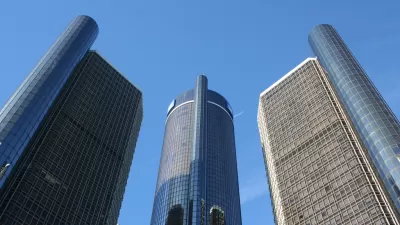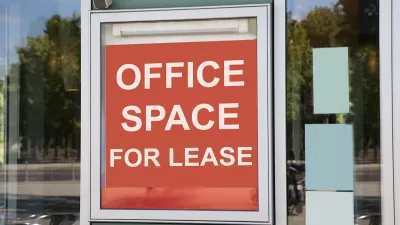Adaptive reuse is a hot concept, but regulatory and financial hurdles have made it slow to catch on in practice.

With many companies offering their employees long-term remote work and ending their leases on large urban office buildings, the future of business districts may lie in adaptive reuse, writes Henry Grabar in Slate. "Many business districts face the highest vacancy rates in decades, and a hundred million square feet of new supply from the pre-pandemic cycle is still coming online each quarter."
"There’s ample precedent for adaptive reuse as an engine of urban revitalization. Light industrial buildings in New York City’s Cast Iron Historic District (today’s SoHo) were converted into live-work lofts starting in the 1960s. The rich stock of 20th century office buildings in Chicago and Los Angeles have been converted into apartments. New England mills have been appropriated as hotels and museums."
Adaptive reuse is "one of the greenest constructions you can do," says Scott Maenpaa, a project manager at Boston-based the Architectural Team, and can be 20 to 30 percent cheaper than new construction, but conversions across the country have been relatively slow. Long-term leases, in many cases ten years or more, are creating a lag in office building vacancy, and a complicated legal landscape makes the process difficult and expensive. So far, "office owners by and large aren’t yet trying to unload their buildings at conversion-friendly prices."
"'The current controls in place make it really difficult to be able to convert from office or hotel to residential,' said Sheila Pozon, a land use lawyer at Kramer Levin." Cities like Dallas and Baltimore "did not see significant conversion of older offices until they offered sizable tax breaks," indicating that, while adaptive reuse seems "a bigger trend will require a push."
FULL STORY: Could Your Empty Office Turn Into Apartments?

Alabama: Trump Terminates Settlements for Black Communities Harmed By Raw Sewage
Trump deemed the landmark civil rights agreement “illegal DEI and environmental justice policy.”

Planetizen Federal Action Tracker
A weekly monitor of how Trump’s orders and actions are impacting planners and planning in America.

Why Should We Subsidize Public Transportation?
Many public transit agencies face financial stress due to rising costs, declining fare revenue, and declining subsidies. Transit advocates must provide a strong business case for increasing public transit funding.

Understanding Road Diets
An explainer from Momentum highlights the advantages of reducing vehicle lanes in favor of more bike, transit, and pedestrian infrastructure.

New California Law Regulates Warehouse Pollution
A new law tightens building and emissions regulations for large distribution warehouses to mitigate air pollution and traffic in surrounding communities.

Phoenix Announces Opening Date for Light Rail Extension
The South Central extension will connect South Phoenix to downtown and other major hubs starting on June 7.
Urban Design for Planners 1: Software Tools
This six-course series explores essential urban design concepts using open source software and equips planners with the tools they need to participate fully in the urban design process.
Planning for Universal Design
Learn the tools for implementing Universal Design in planning regulations.
Caltrans
Smith Gee Studio
Institute for Housing and Urban Development Studies (IHS)
City of Grandview
Harvard GSD Executive Education
Toledo-Lucas County Plan Commissions
Salt Lake City
NYU Wagner Graduate School of Public Service





























